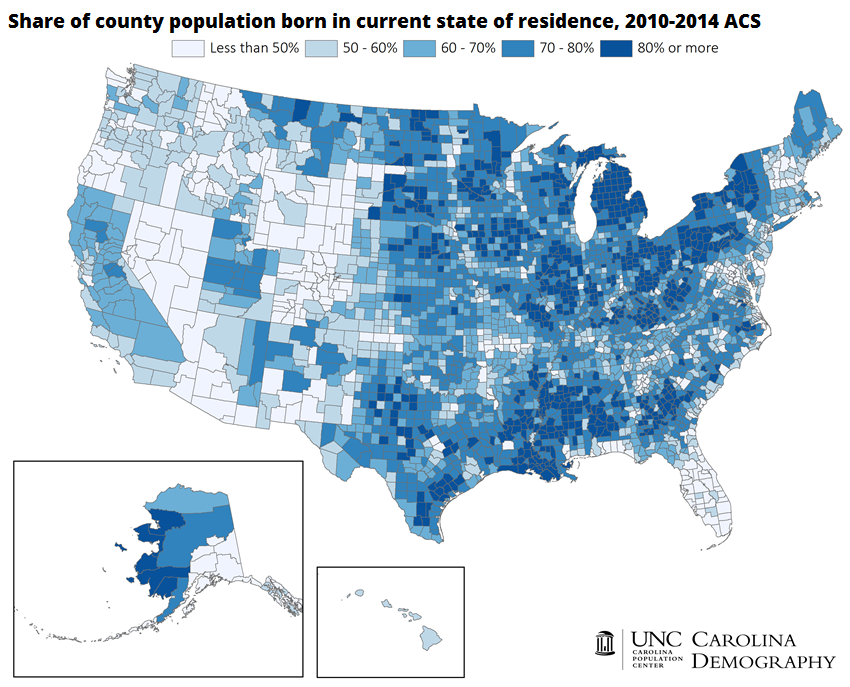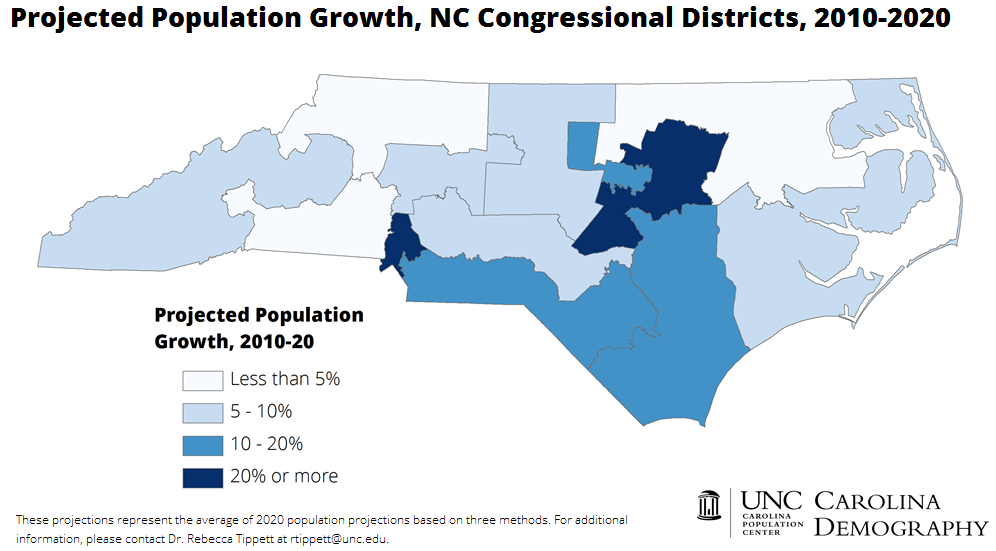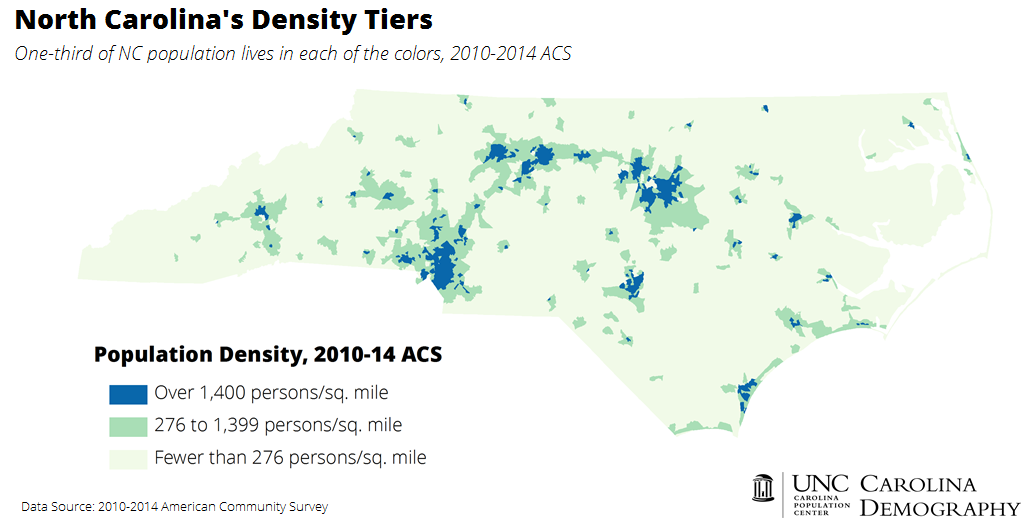Over the past two weeks we’ve shared a couple of posts from Dr. Rebecca Tippett of Carolina Demography at UNC’s Carolina Population Center. If you haven’t read them, we encourage you to go back and read those two posts in their entirety – it’s really good stuff. But as great as Rebecca’s work is, we can’t post ALL of it, so we’ve decided to break down what we believe to be some of the more important bits of information. Of course, you can read all of her posts at demography.cpc.unc.edu/blog and follow her on Twitter @ncdemography.
Rural population is shrinking, staying the same, or growing slowly
- “Statewide, 216 (29%) of municipalities lost population since 2010. Among municipalities with fewer than 1,620 residents, 55% lost population over this time period and another 33% grew by less than 5%, slower than the state’s overall increase.”
- 48 counties have lost population since 2010, all are rural.
- “Five counties—Bertie, Gates, Northampton, Tyrrell, and Washington—have lost 5% or more of their population since 2010.”
Urban growth is among highest in the nation
- “Charlotte and Raleigh captured 27% of NC population growth between 2010 and 2015”
- Charlotte had the 9th largest increase nationally, Raleigh 21st.
- Nearly half of the state’s growth since 2010 occurred in Wake and Mecklenburg counties.
Urban growth is coming from both rural NC migrants (“sticky state”) and out-of-staters (“migrant magnet”)
- “Among North Carolina-born adults, 72% still live here, the highest share of any other state except for Texas.”
- “Among the state’s most rural counties, nearly three of four movers (73%) who move out of the county move elsewhere in the state.”
- “North Carolina is similar to the national average: 57.8% of North Carolina state residents were born here.”

- “Over half a million eligible voters have lived in NC for less than five years”
- New arrivals come from (in order): Florida, Abroad, Arizona, New York, and California.
- New arrivals tend to be younger, more diverse, more educated than the general population.
Numbers and people = power and influence
Every 10 years the US Census collects demographic information and the states have to redraw legislative districts to reflect changes in where people live. This is because, among other rules, Congressional districts have to be reapportioned so that each district contains the same number of people, to the greatest extent possible. In changing the composition of legislative districts, mapmakers can also alter the balance of power between different groups.
- “North Carolina’s population has grown substantially in the past few decades, and it continues to grow. At the same time, population is increasingly concentrated in urban cores within the state and rural areas are facing additional population losses. As a consequence of these uneven population changes, many districts were already over or under ideal district size in 2014, in spite of their equal populations using 2010 decennial census counts. Unless current population growth trends change in significant and unexpected directions, these patterns will intensify through 2020, bringing significant changes to the state’s legislative maps during the redistricting process.”

NC will likely gain a 14th US House district – where will it be?
- “North Carolina will likely have 14 seats in the U.S. House of Representatives following the post-2020 Census reapportionment process. While we cannot guarantee a 14th seat (no matter how likely), we can guarantee significant changes to the state’s congressional district boundaries during the 2021 redistricting process.”
- “The districts in the state’s two fastest-growing metropolitan areas—District 12 in Charlotte and Districts 2 and 4 and 13 in the Triangle—are projected to be significantly above the ideal population size for 14 districts in 2020. Any new district boundaries will reflect the continued growth of the state’s largest urban areas. While the projections highlight which areas will need more representation (and thus more districts) after 2020, the placement of the districts is ultimately up to the individuals responsible for redrawing the district lines during the 2021 redistricting process.”
Rural Voices Need to be Heard
NC is still one of the most rural states in terms of population density – according to Carolina Demography, “North Carolina’s rural population is larger than that of any other state except for Texas,” and “among the ten most populous states, North Carolina has the largest proportion of individuals living in rural areas.”
And agriculture is still particularly vital to the health and success of rural economies, and is a major contributor to the state’s economy as well. Agriculture and agribusiness are the state’s #1 economic driver, generating $78 billion annually, and agriculture supports 686,200 jobs, including manufacturing, transportation, retailing, and more.
Despite population shifts towards urban areas and away from rural areas, it’s important that rural North Carolina is well represented and has a voice in Raleigh and Washington, DC.
